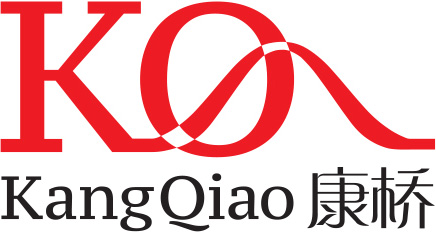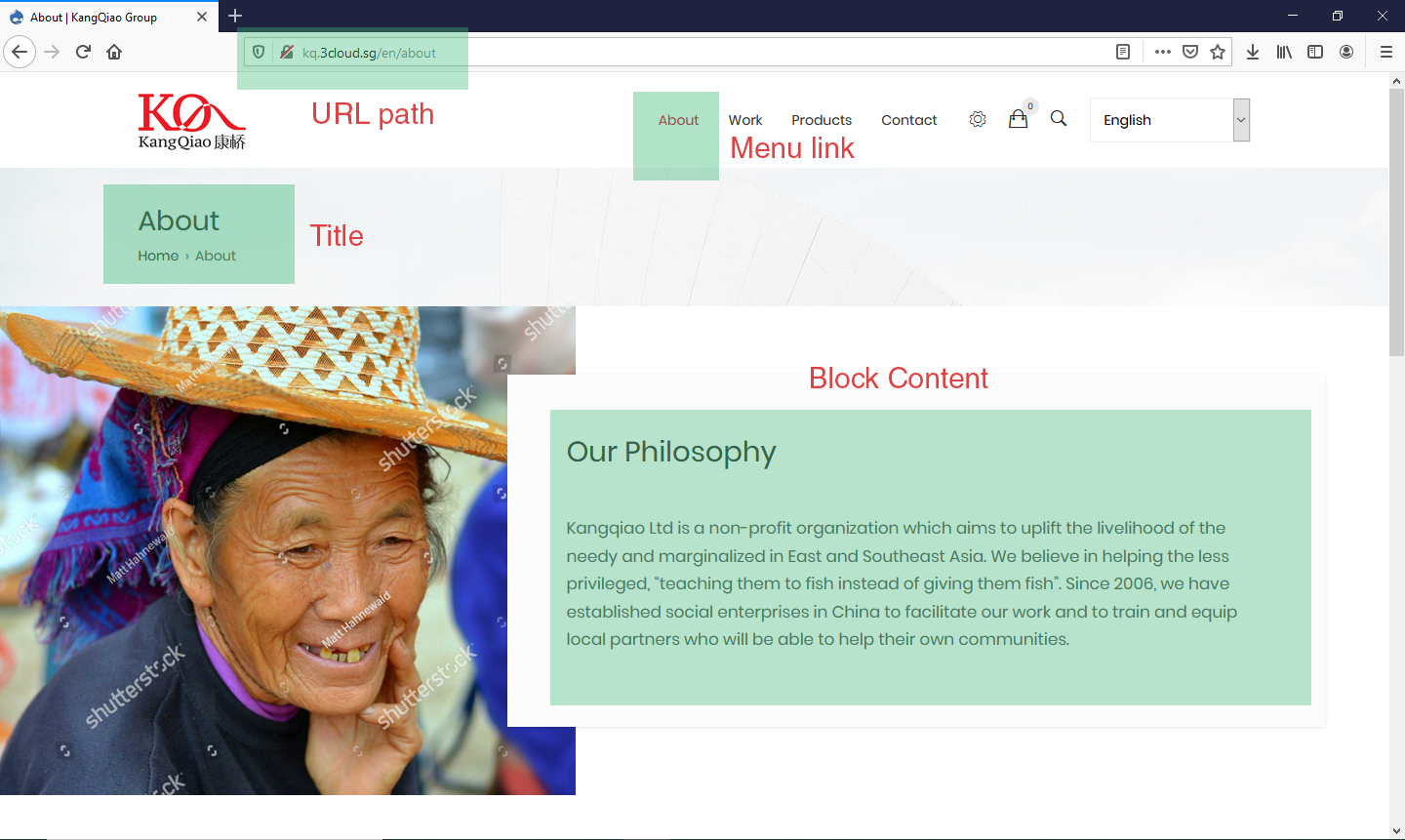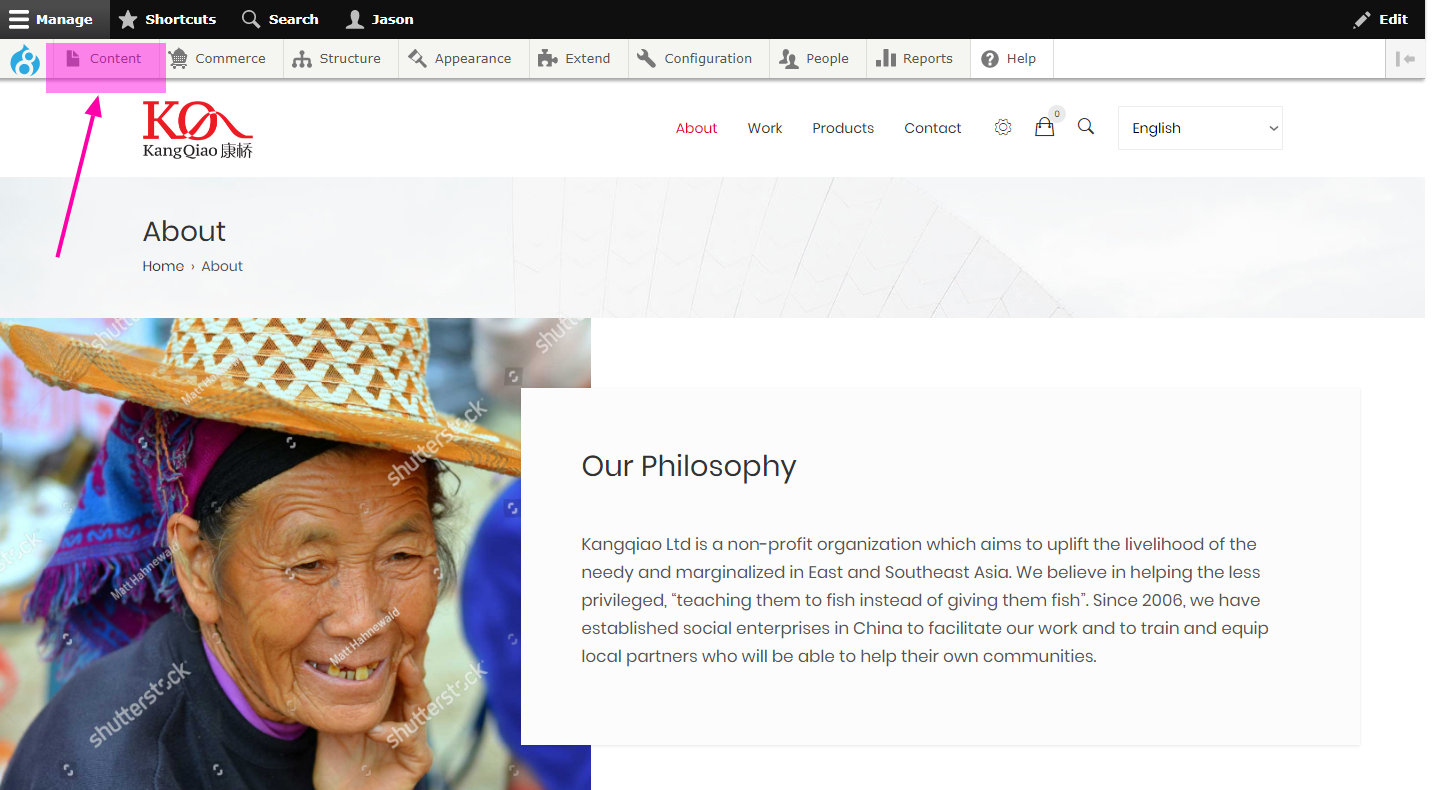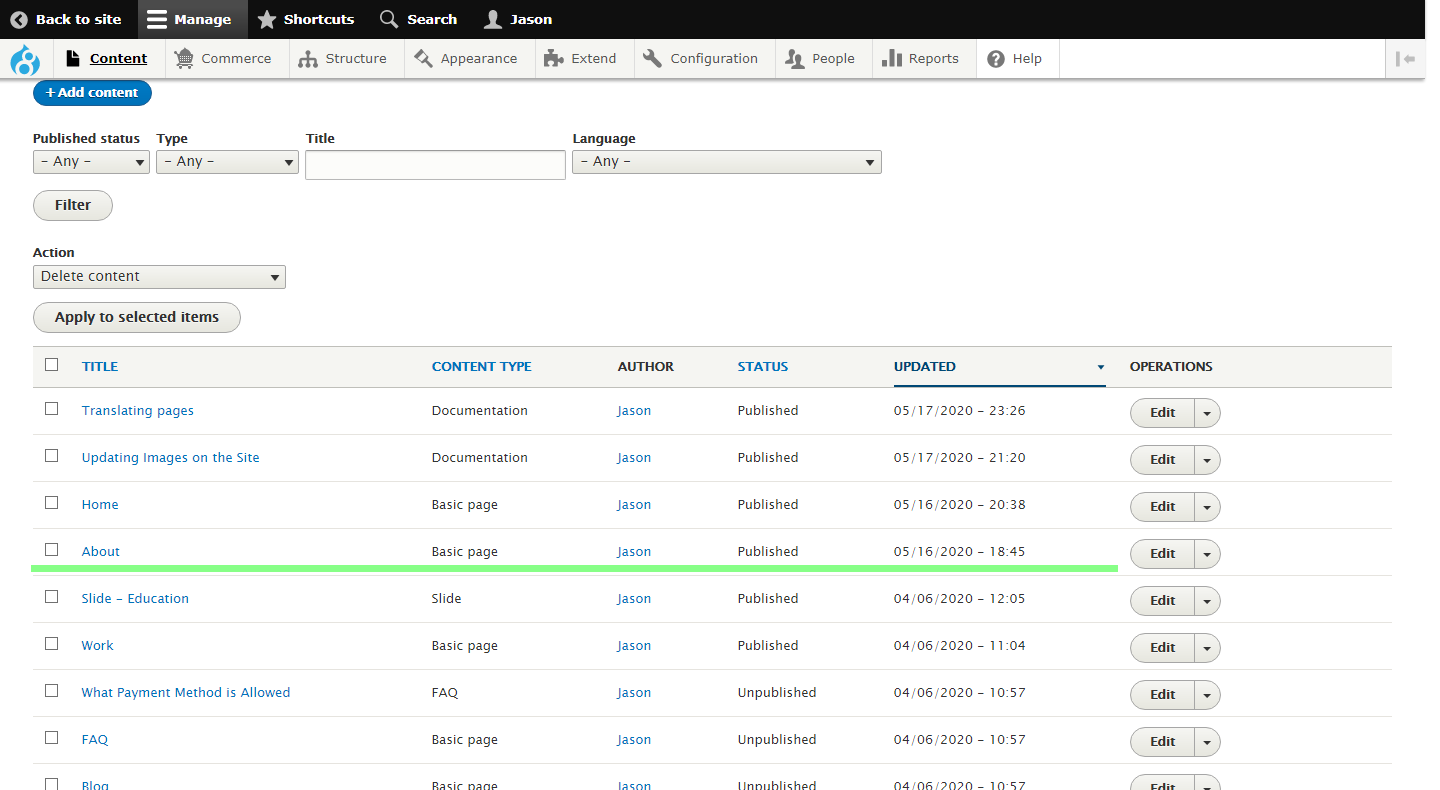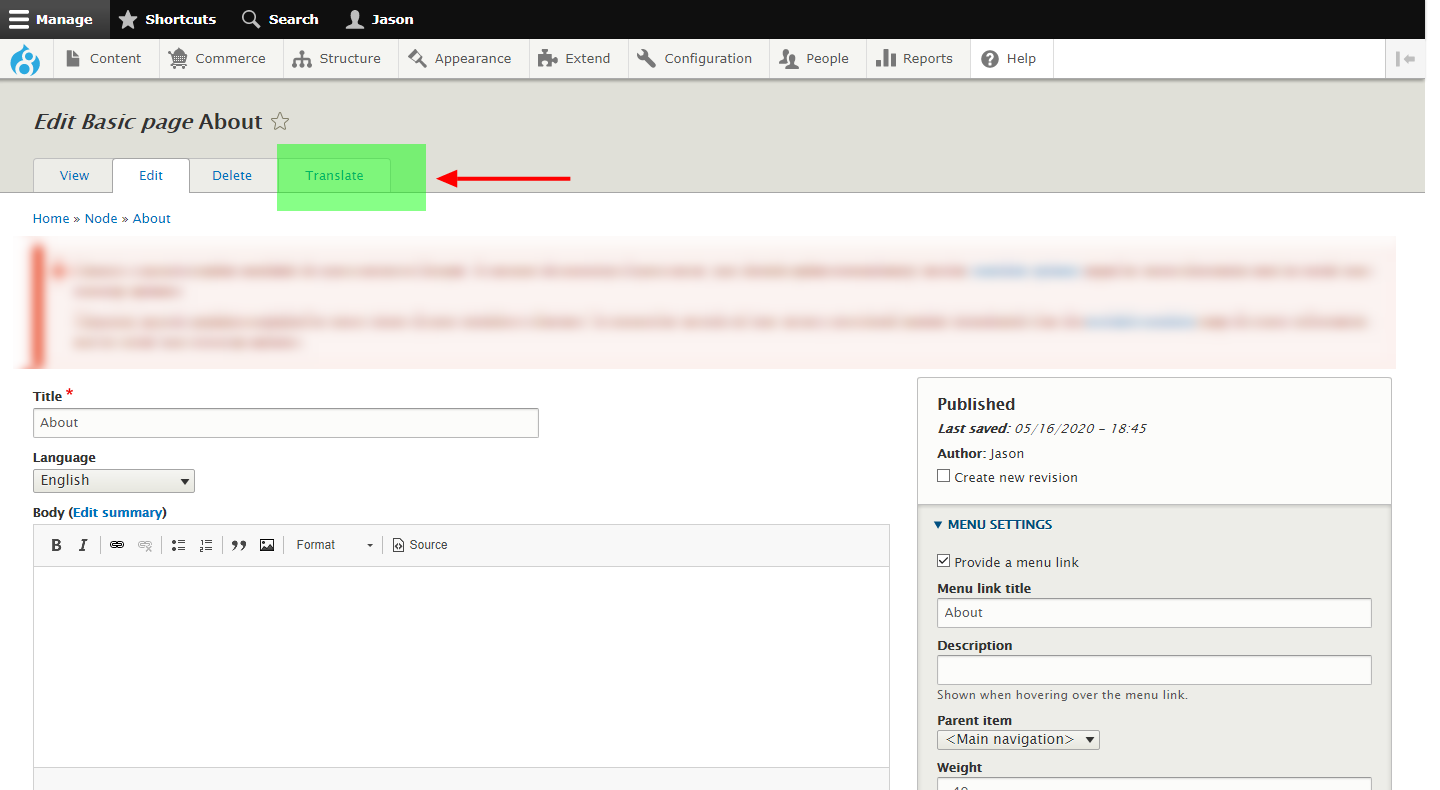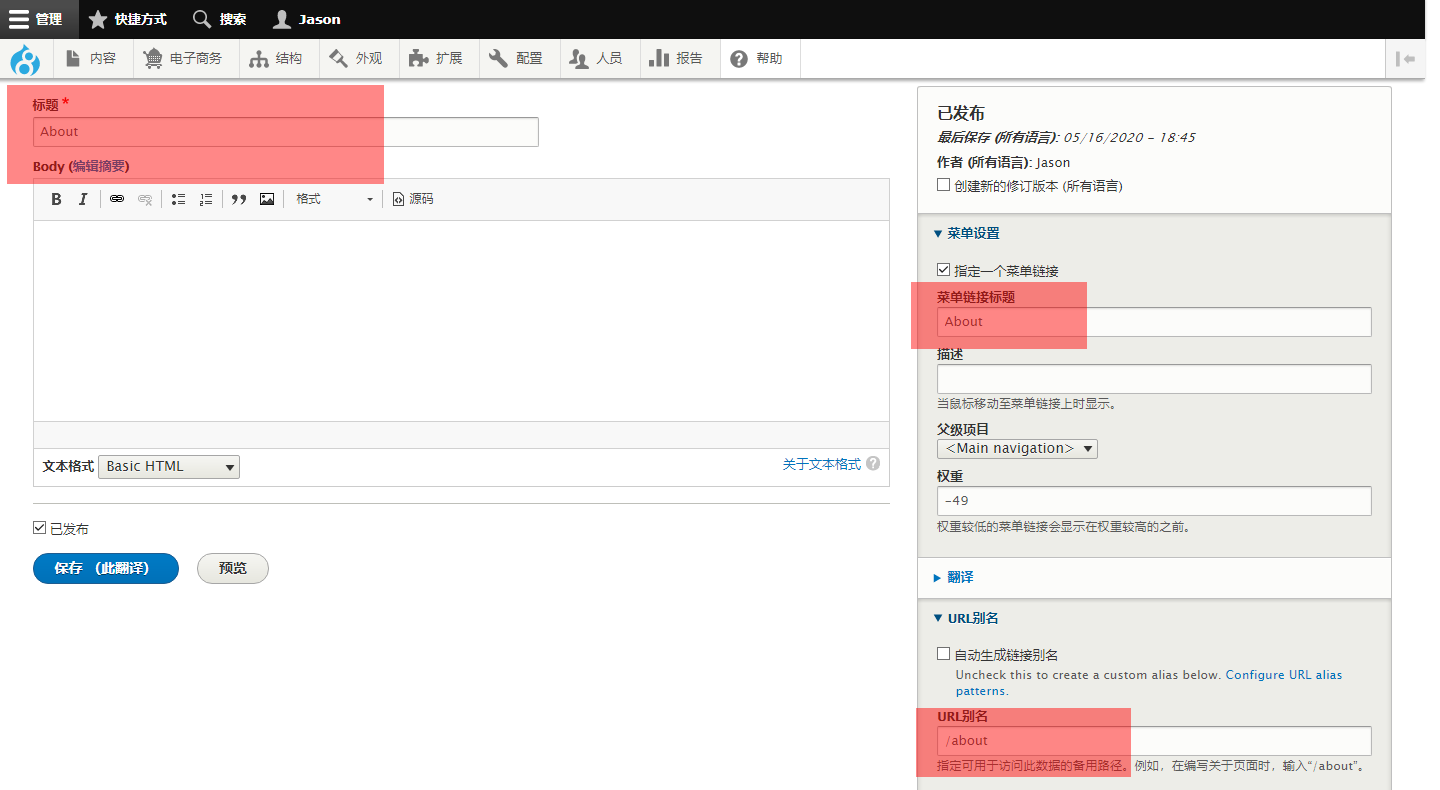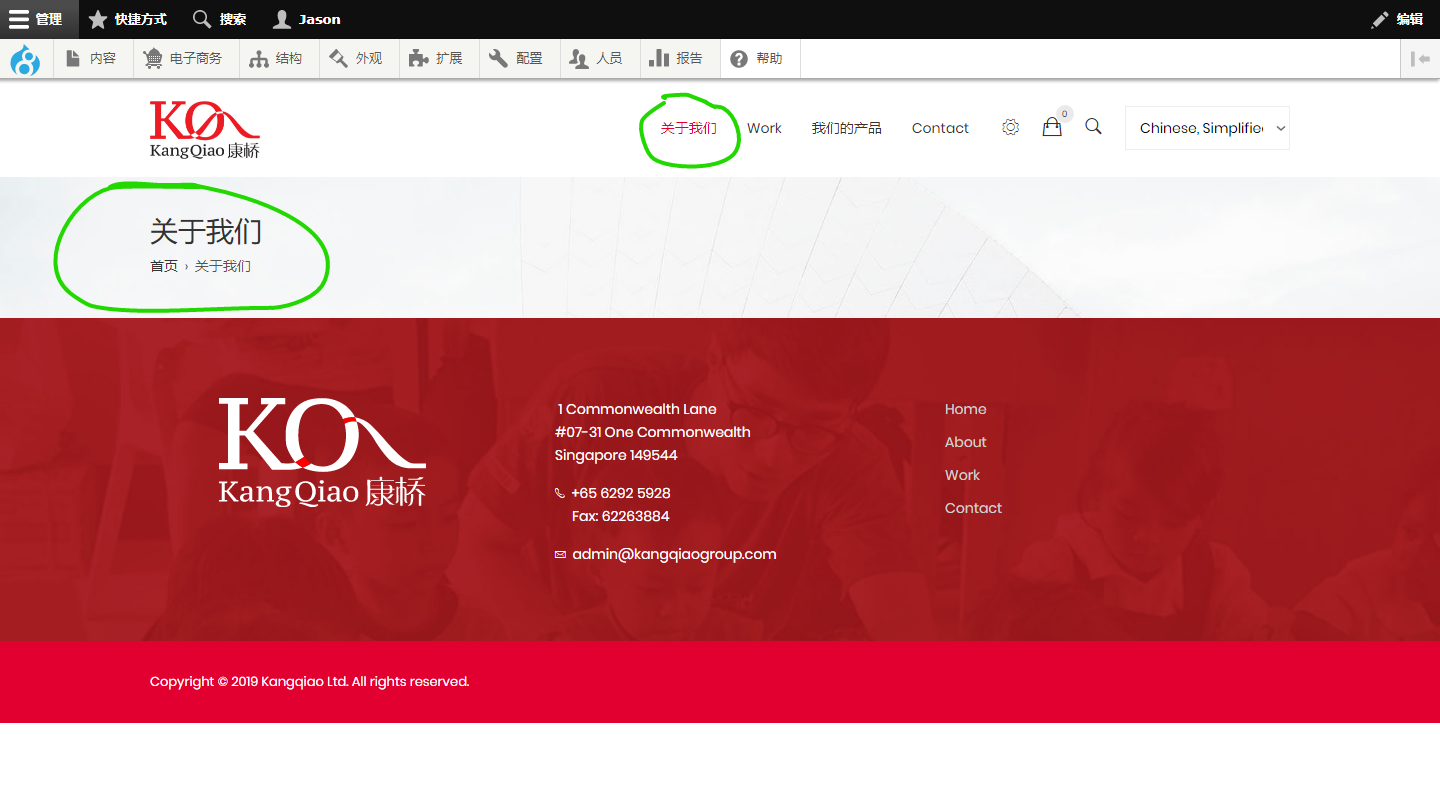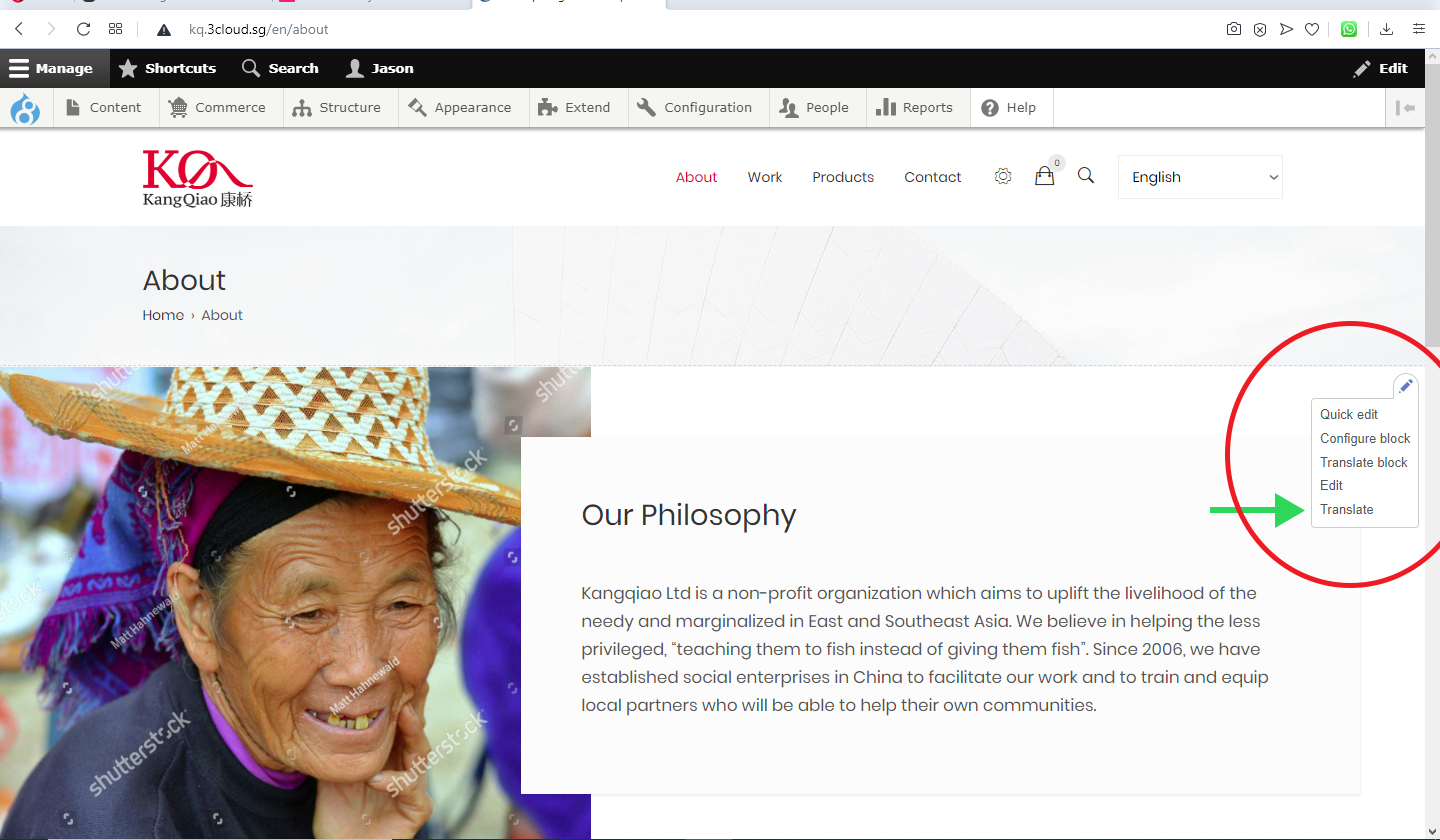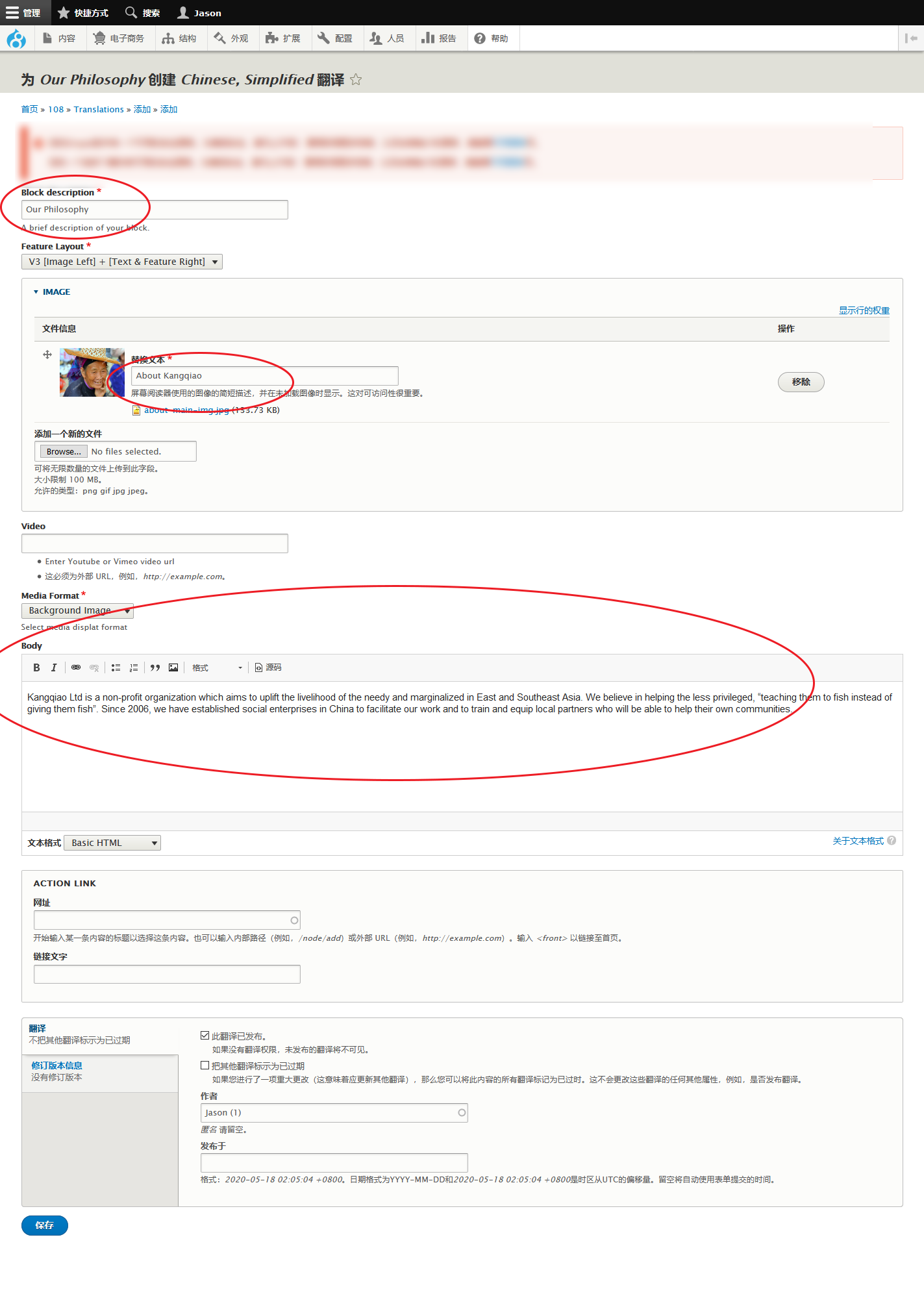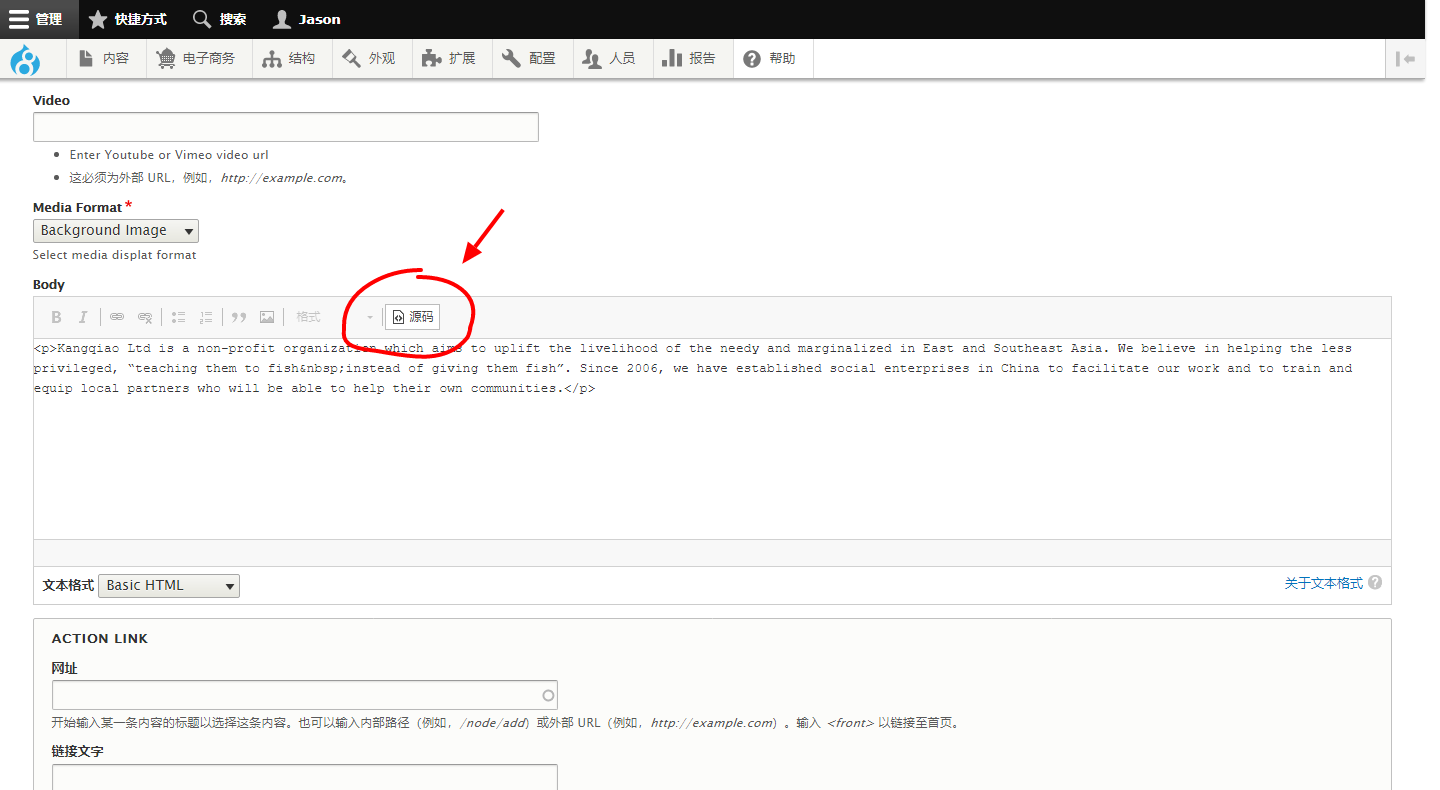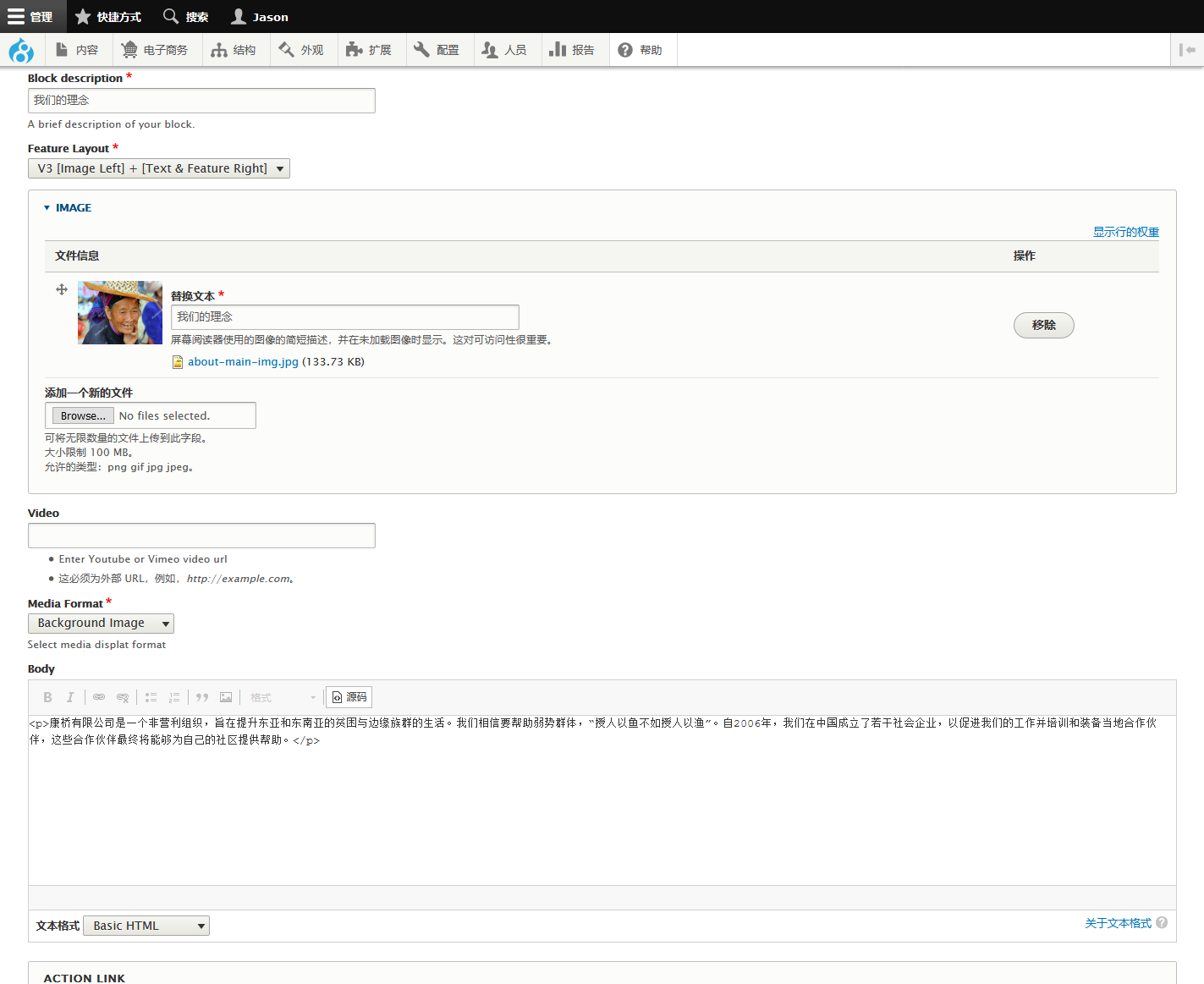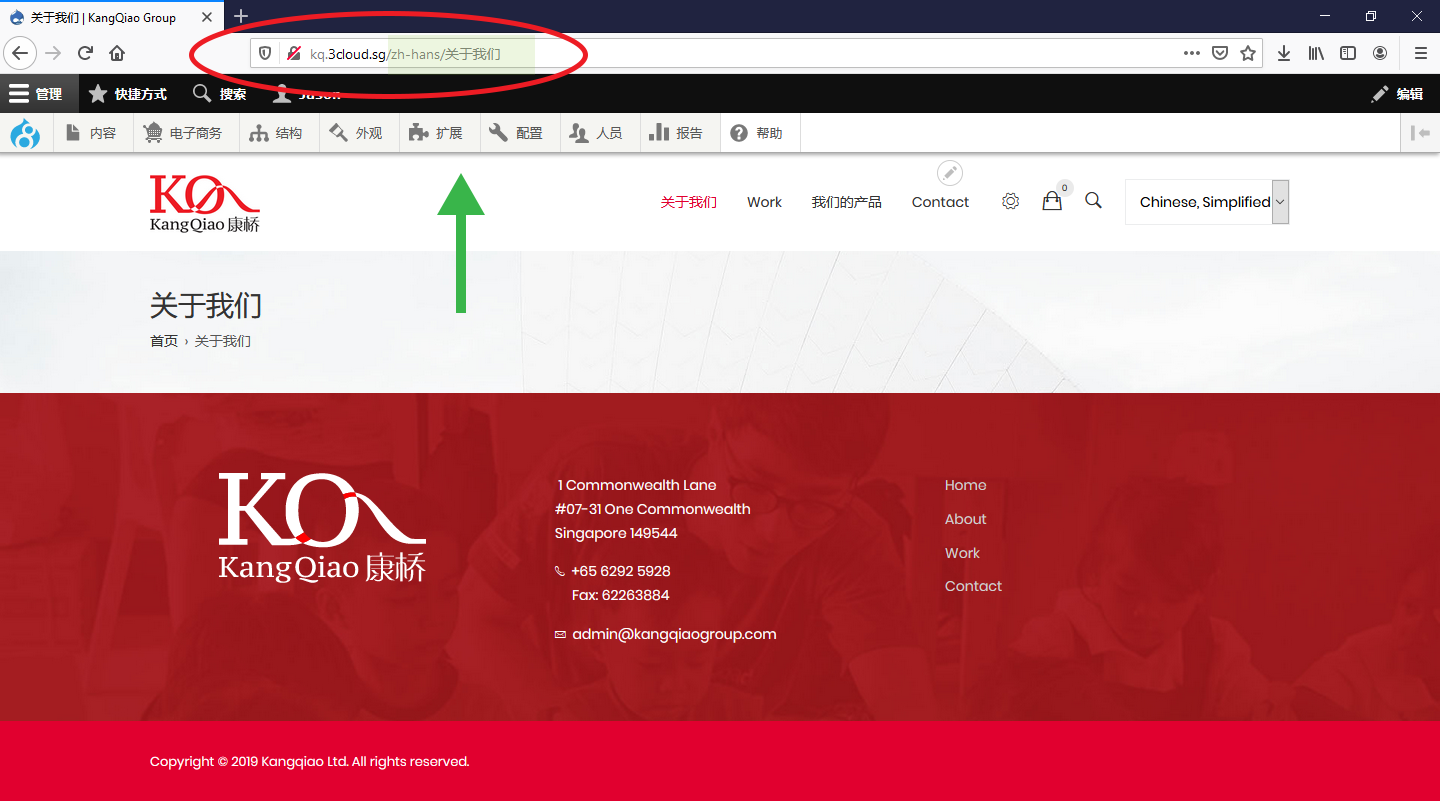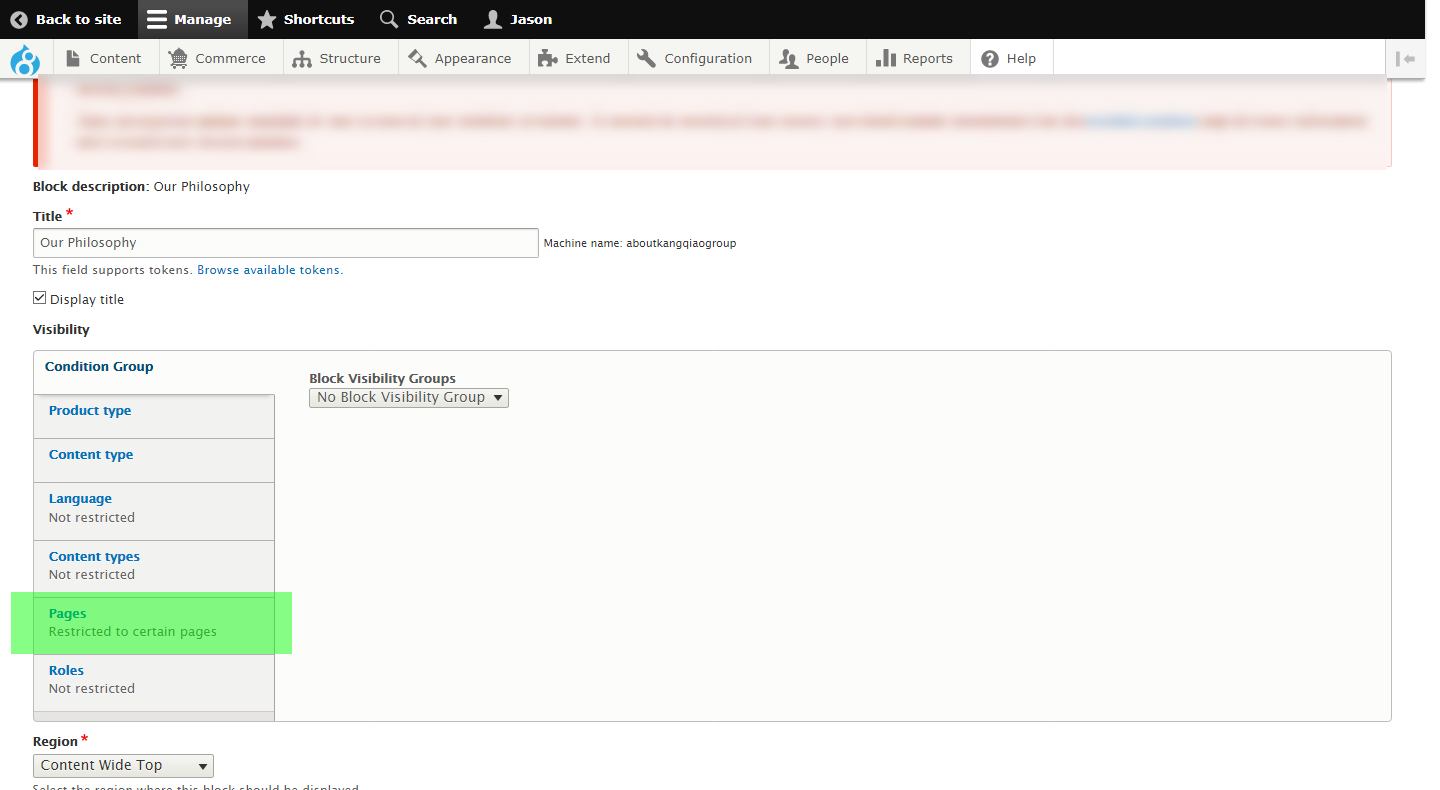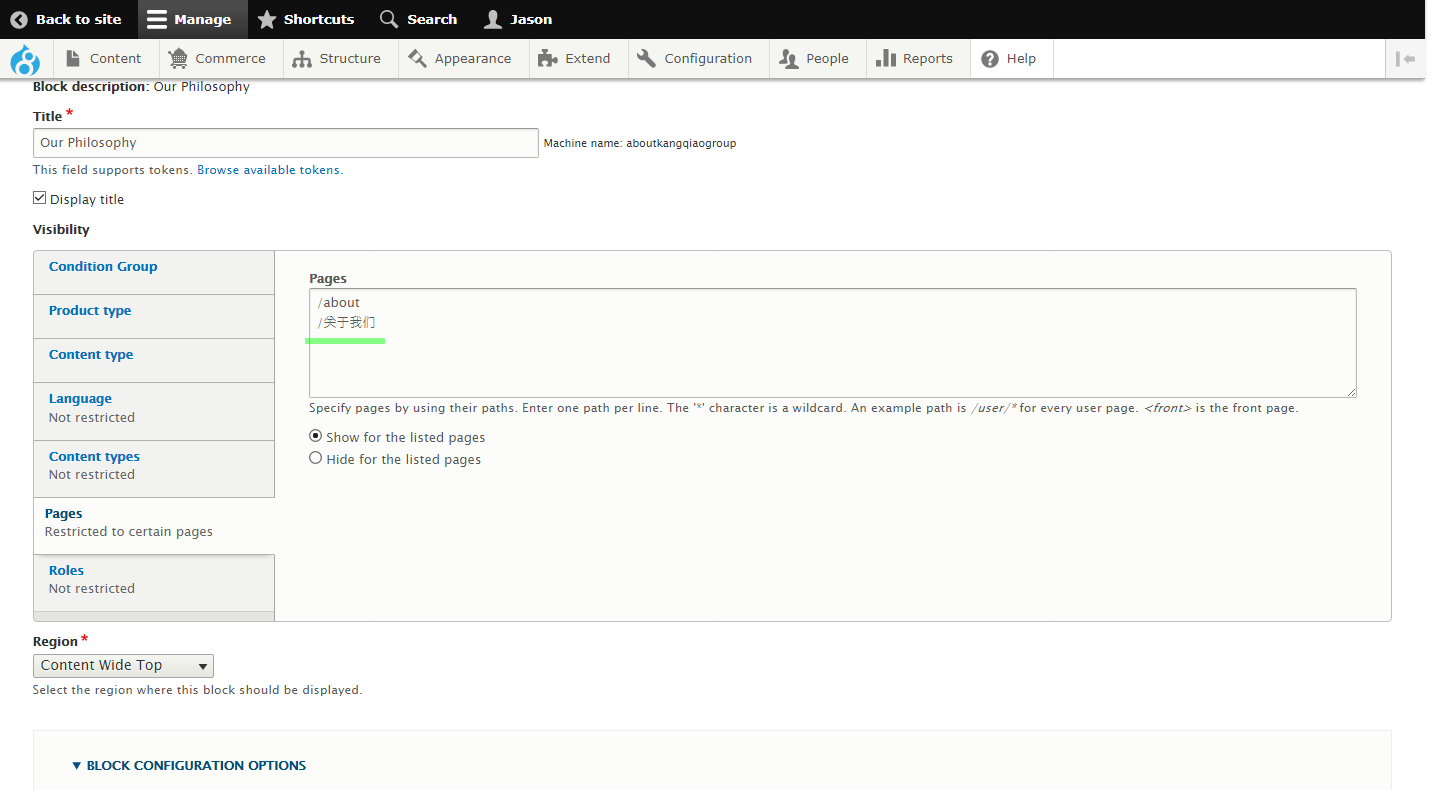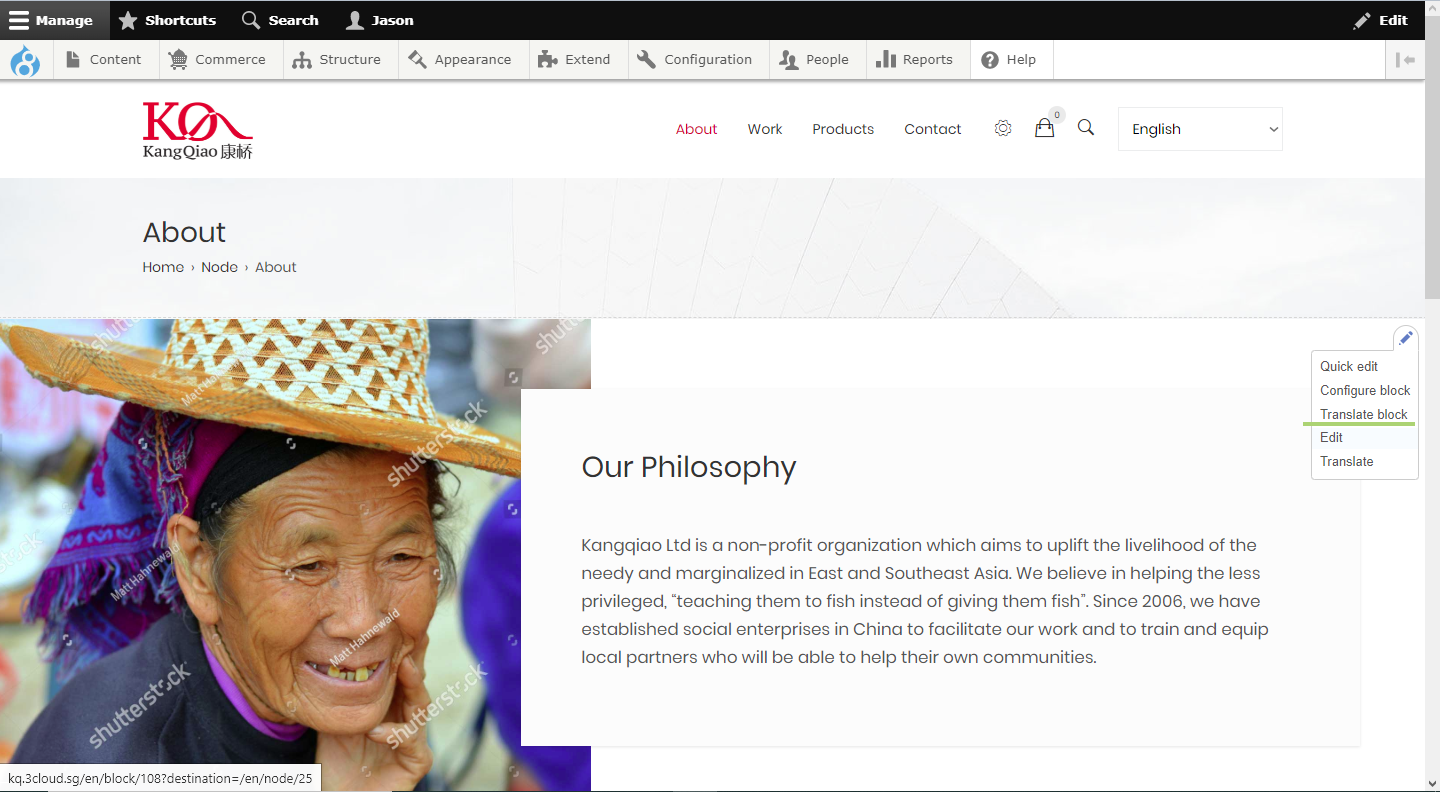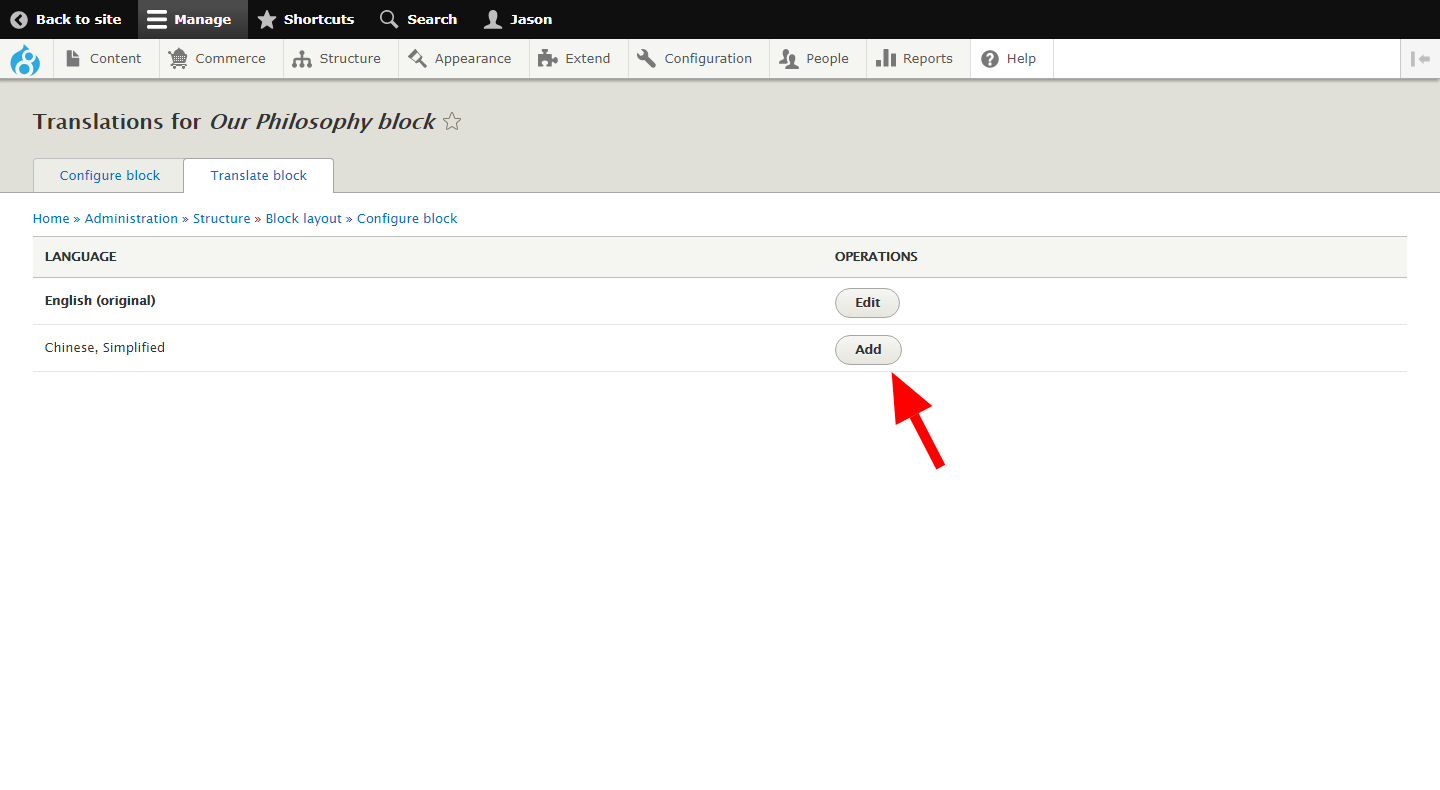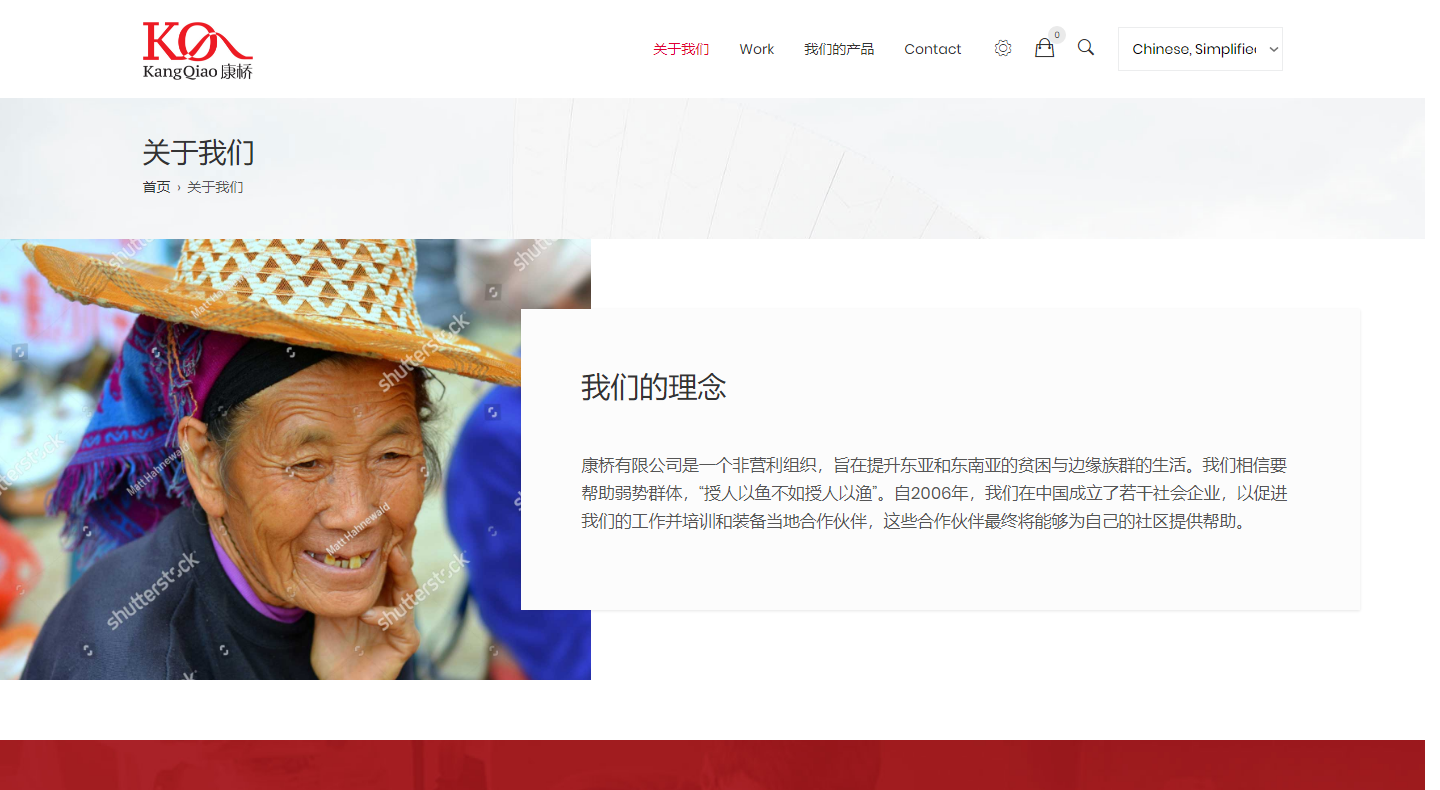Important:
1. The site's default language is English.
2. When user switches from English to Chinese language, pages without translation will be empty. However, some pages contain blocks with pre-configured translation either by a contributed module or the Drupal system itself e.g. the contact form, or some terms that came with the commerce module.
3. Typically,when translating a page, you need to make sure the following are all translated...
- The page title
- The main nav menu link for the page
- The page path or url (the link that shows up in the browser address bar).
- The page's contents or content blocks that were inserted on the page
Step I - Translate page title, path and menu link
1. Sign in to the site.
2. Go to Admin > Content. Select the content item you wish to translate (e.g. the About page, which is a Basic page content type).
3. Click 'edit'.
4. Locate the set of tabs on the upper left side of the page. Click on 'Translate'.
5. You will find that in the Language table, it says that 'Chinese, Simplified' has a status of 'Not translated'. Click on 'Add' to add Chinese translation.
6. Update the following entries to their Chinese translation
- Title
- Menu link title
- URL alias
7. Hit Save.
If you check the updated About page and switch site to Chinese, you will find the said items translated. But the page remains empty. So next, you need to translate the inserted content blocks.
Step II - Translate inserted 'content blocks' on the page
1. On the front end, go to the English version of page you wish to translate (e.g. the About page)
2. Locate or identify the blocks on the page. At the upper right corner of every block, you will find there is a edit clickable icon ( a pencil icon).
3. Click on this 'edit' icon and a contextual set of links appear
- Quick edit
- Configure block
- Translate block
- Edit
- Translate
4. Click on Translate
Note: You don't need to pick 'Translate block' as this is for translating the block's config interface. We'd want to pick 'Translate' because this is for editing the block's content, which is what we want.
5. On the next page, you will find in the Language table, it says that 'Chinese, Simplified' has a status of 'Not translated'. Click on 'add'.
Translate the contents of the page
- the block description (optional, as this is not seen publicly)
- the image alternative text (for web accessibility to people with disabilities or so users know what the image is about when, for example, the image fails to load)
- the text inside the 'Body' field which comprise the block's main content
Tip:
When editing the Body field content, it is always better to perform edits using Source Code format - the format that also displays the html code. This ensures the HTML remains clean and no unwanted markups are created, which sometimes cause the content display to be broken.
6. Save the page
Step III - Configure the translated block so it appears on the page
1. On the Chinese version of the page, copy the part of the url after the language code (include the preceding slash)
Example
Full path: kq.3cloud.sg/zh-hans/关于我们
Part to copy: /关于我们
2. On the English version of the page, click on the block's 'Edit' icon again and this time, select 'Configure block'
3. Under 'Visibility' settings, click on 'Pages'
4. In a separate line, paste in the copied url path e.g. /关于我们
5. Save the page.
6. Lastly, we also need to translate the block title. On the English version of the page, click on the block's 'edit'icon'. when the contextual set of links appear, choose 'Translate block'.
In the next step, in the Language table, click on 'Add' to add Chinese translation.
Replace the English title with the Chinese title.
Save the page
When you view the Chinese version of the page, the block should be visible now
